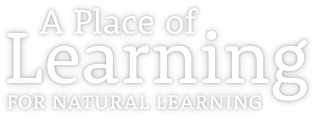Health and Safety Procedures for Pruning in Schools and Community Gardens
A Place of Learning teaches children and adults how to plant and prune trees at schools and teaches adults how to grow vegetables in a community garden setting in New Zealand.
For the purpose of this document, Mary Tingey is referred to as the Presenter.
All gardening and pruning lessons use the following procedures for children and adults.
All students are taught the correct storage of tools e.g. secateurs put back in bin or wheelbarrow and spades left upright.
All students are given the option to not participate in the use of a tool. e.g. Students are always invited to use a ladder, with the option of not doing so.
Hazard Identification
Hazard: Secateurs
Potential Harm: Cuts to fingers or hands, ser stabs themself or other participants
Controls
- Training and observing:
- Before using the secateurs the presenter teaches how to:
- lock and unlock the secateurs
- locking secateurs after each cut.
- passing secateurs with handles
- practising the use of secateurs with pre-prepared bud wood.
- Students are taught correct posture and body alignment for cutting.
- The presenter is always watching participants when using secateurs
Hazard: Loppers
Potential Harm: Cuts to fingers or hands, user stabs themself or other participants
Controls
- Training and observation
- All participants are taught correct use of loppers. Students are taught correct posture and body alignment for cutting.
- Loppers are only used by children under close supervision i.e. the trainer standing beside the student or with the trainer having hands on the loppers.
- Adults in lessons only use the loppers under supervision
- Presenter always watching participants when using loppers
Hazard: Ladder
Potential harm: Falling from ladder causing broken bones and or sprains
Controls
- Training and observation
- A Place of learning uses an Allite 5 step 1.5 m orchard ladder according to the manufacturer’s specifications.
- All participants are taught correct ladder placement and to check the ladder placement prior to use.
- Presenter always observing participants when using the orchard ladder.
- Presenter assess experience of adult participants before letting them use orchard ladder on their own, presenter still maintains careful observation.
Hazard: Hand tools spades, shovels, rakes, trowels, forks and hoes.
Potential harm: trip hazard causing bruising, muscle strain
Controls
- Training and observation
- Before participants use any hand tools they are taught the correct method of use. They are taught how to use hand tools correctly to prevent injury such as back strain.
- Participants are taught to use the right tool for the right job
- They are also taught to store unused tools correctly e.g. spades and rakes upright.
- Presenter always observing participants when using all hand tools
Hazard: Pruning Saw
Potential harm: Cuts and abrasions
Controls:
- Pruning saw is kept in presenters tool belt, only used by presenter or trained adults in community gardens – under supervision
Hazard: Motor vehicle
Potential harm: running over a child causing serious injury, having a car accident on the road
Controls
- Presenter drives at a walking pace while on school grounds and expect that a child could come out of nowhere.
- General use of motor vehicle at a school: A motor vehicle is only used on school grounds passed the approved car park with a spotter from a member of staff at all times. In cases when the carpark is joining the playground or high use areas the presenter will engage a spotter from the school when moving a motor vehicle
- Tree delivery (including trailer): A member of the school is engaged to walk in front of the motor to look for children coming towards the vehicle, that person will tell the children to wait, or presenter stops vehicle.
- A motor vehicle is only used in community gardens with a spotter.
- Presenters drives according to the NZ road rules and drives a vehicle that has a current WOF and registration
Hazard: Trailer
Potential harm: Child falling off trailer causing bruising. Another vehicle hitting trailer while driving because trailer not connected properly or brake lights not working. Backing trailer into property or a person.
Controls
- Presenter takes plants off trailer. Presenter or staff member keeps an eye of the trailer
- Before using trailer presenter checks all the lights are working, check the D shackle and tow bar are firmly in place
- Trailer has a current registration and WOF. It is professionally built and regularly serviced
- Presenter is trained at using a trailer.
Updated
01 10 2020
